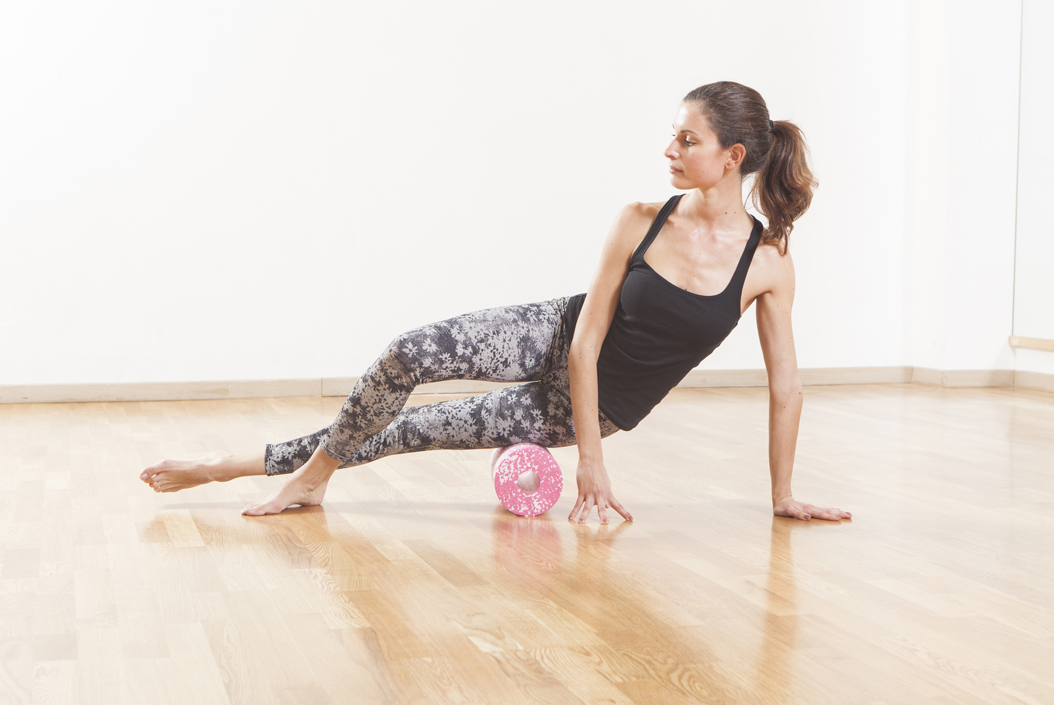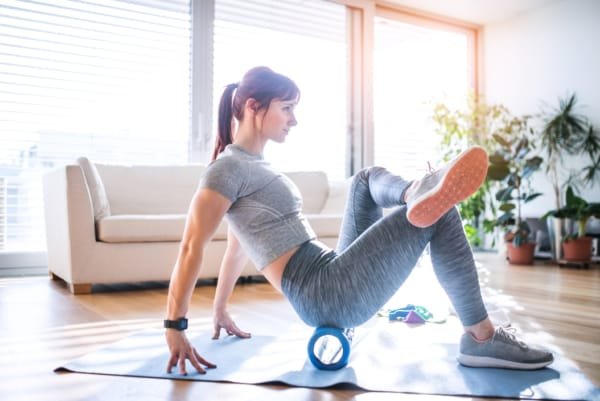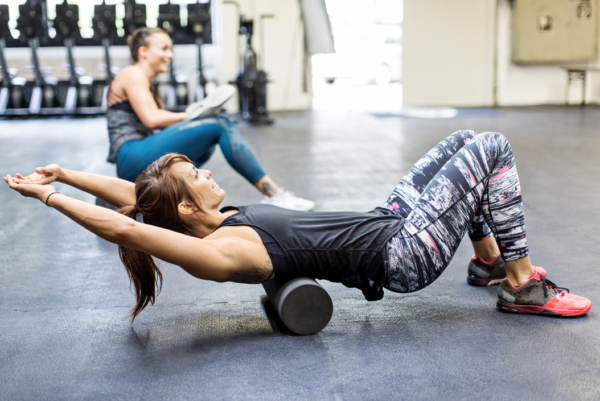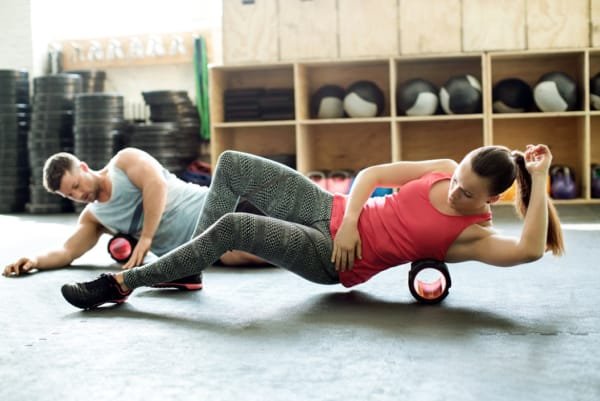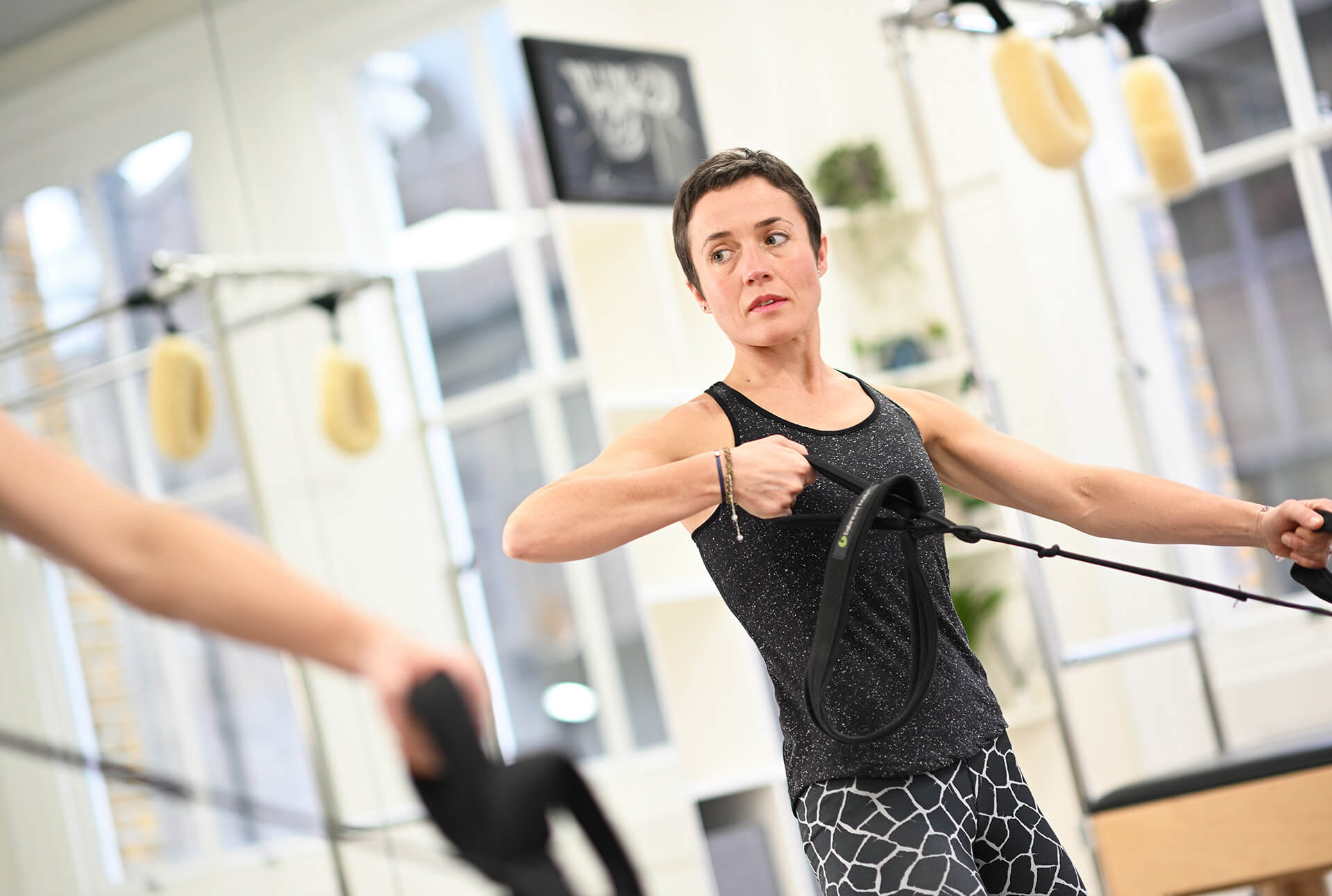Getting access to a foam roller these days is easy. You can pick up a cheap one in your local sports shop and gyms usually stock them. In fact, ask most people and they’ll tell you they already have one lying around at home somewhere.
Despite these facts – and although the benefits of foam rolling are well known – few people use this device regularly. After all, who has time to foam roll after a day at work or a long gym session?
Well, according to experts, those of you neglecting this device are missing out. Because using one for self-massage can increase mobility and flexibility as well as help work out knots and tension in the body.
And the benefits don’t end there. If you’re someone who exercises frequently, a regular foam rolling routine can help reduce muscle soreness after a workout. For those recovering from an injury, foam rolling techniques can also support your rehab.
Depending on your individual needs, a 1-2-1 session with a Physio or Pilates teacher can be a great idea when it comes to starting foam rolling. And it’s especially advisable to check in with one if you have an injury. They can help assign you the right exercises and watch your form as you execute them.
But, for all you injury-free people and Pilates beginners, here are 5 of the best foam rolling exercises to get you started.
Foam rolling for your Feet
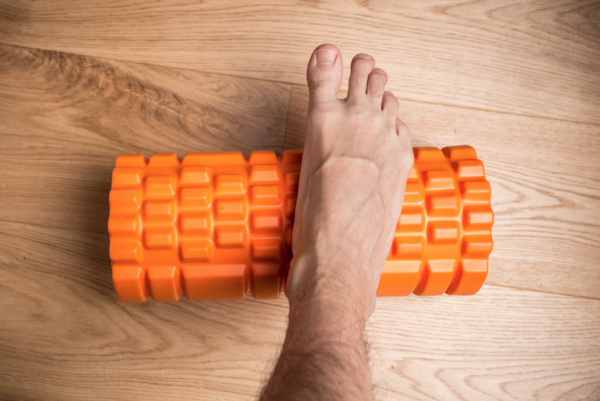
Okay, so they are rarely at the top of the list when it comes to self-care. But feet need exercise to keep them strong, supple and balanced. And where better to start than with some gentle foam rolling.
The exercise: roll along the sole of your foot, from your heel to your toes and back again.
You can also roll the sides of your feet by turning them one way and then the other.
Our tip: Do this from a seated position. Too much pressure on the roller could end up bruising the sensitive skin.
Foam rolling for your hamstrings
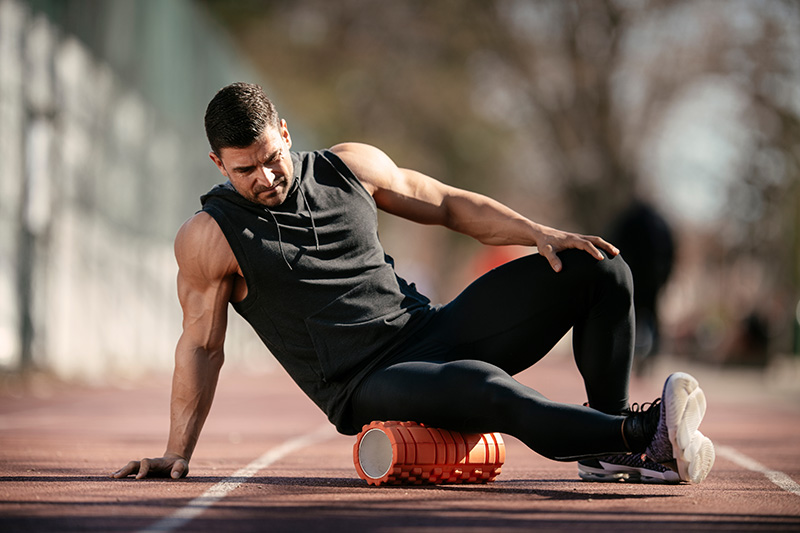
Moving up the chain. Next up is your hamstrings. Do this after a hard gym session or long day seated. Massaging your hamstrings in this way releases tension and aids recovery.
The exercise: Sit with your right leg on the foam roller; bend your left knee and place out of the way. Put your hands on the floor behind you. Roll from your knee to just under your butt cheeks.
Top tip: Add intensity to this exercise by crossing the bent knee over the one being rolled out. This will increase the pressure and deepen the massage.
Foam rolling for your butt
After sitting all day long your glutes need some TLC. So, get out your foam cylinder and start rolling! Doing so regularly will release tension in this area and can help you improve hip mobility. It should also help you activate your glutes better when hip thrusting, bridging and squatting.
The exercise: Sit on the foam roller and cross one leg over the other. Next, create pressure on one butt cheek by leaning your weight onto the leg with the foot on the floor. Roll up and down several times and then switch over.
Our tip: Try a textured foam roller for a deeper glute massage.
Foam rolling for your upper back
This is an area a lot of tension and stress is stored. It also suffers the most from poor desk postures. So, give your shoulder and back a break and foam roll them after a long day at the office.
The exercise: Lie on your back with your knees bent and the foam roller placed behind your mid-back. Interlace your fingers and take them behind your head. Now, using the strength of your legs, move your body up and down over the roller. Avoid your neck though, and only roll from your underarms to the base of your ribs.
Top tips: This exercise is not only a great stress-reliever. Practising it regularly will mobilise your upper spine, improving posture and even your squat form. It will also help you achieve more advanced Pilates exercises, like the Hundred.
Foam rolling for your lats/shoulder
Your latissimus dorsi (lats) is the largest of your back muscles – it stretches to the sides and behind the arms. This muscle is responsible for movements of the shoulder joint and can even affect muscle function at the hips.
Like your neck and shoulders, your lats get tight from hunched-over desk postures and after many gym exercises. And this is a problem because dysfunctional lats can lead to injury, which is why you need to roller them regularly.
The exercise: Come onto your side with your foam roller just under your armpit. Extend that bottom arm out – the other one can be used for balance. The legs are extended out and slightly bent for support and leverage.
Using your legs, move the body over the foam roller. Work down from your armpit to around the end of your rib cage – and back again.
The tip: Roll slightly backwards and forwards (as well as up and down) to hit the muscle from different angles.
Education is key:
These blogs are designed to give information to everyone, however, it is important to remember that everyone is different! If you have not seen one of our therapists and have any questions about injuries, what you have read or whether this may be useful to you, please just ask. We are more than happy to help anyone and point you in the right direction. Our biggest belief is that education is key. The more you understand about your injury, illness and movement, the more you are likely to improve.


